-
 Bitcoin
Bitcoin $105,278.9859
4.61% -
 Ethereum
Ethereum $2,414.7741
8.20% -
 Tether USDt
Tether USDt $1.0007
0.05% -
 XRP
XRP $2.1600
7.53% -
 BNB
BNB $639.5433
3.75% -
 Solana
Solana $144.3830
9.37% -
 USDC
USDC $1.0001
0.02% -
 TRON
TRON $0.2742
3.84% -
 Dogecoin
Dogecoin $0.1640
8.57% -
 Cardano
Cardano $0.5811
7.49% -
 Hyperliquid
Hyperliquid $37.2466
5.28% -
 Sui
Sui $2.8243
14.84% -
 Bitcoin Cash
Bitcoin Cash $460.8816
2.22% -
 Chainlink
Chainlink $12.9580
11.75% -
 UNUS SED LEO
UNUS SED LEO $9.1359
1.23% -
 Avalanche
Avalanche $18.2302
10.30% -
 Stellar
Stellar $0.2463
7.80% -
 Toncoin
Toncoin $2.9151
7.18% -
 Shiba Inu
Shiba Inu $0.0...01163
9.79% -
 Hedera
Hedera $0.1532
14.01% -
 Litecoin
Litecoin $85.3310
6.29% -
 Monero
Monero $308.8215
2.90% -
 Ethena USDe
Ethena USDe $1.0007
0.03% -
 Polkadot
Polkadot $3.4259
9.42% -
 Dai
Dai $1.0002
0.01% -
 Bitget Token
Bitget Token $4.1742
3.19% -
 Uniswap
Uniswap $6.8272
8.53% -
 Pepe
Pepe $0.0...09939
12.29% -
 Pi
Pi $0.5358
6.03% -
 Aave
Aave $257.3092
12.83%
What does the reversal of the bottom area with a huge long shadow the next day mean?
A candlestick with a long lower shadow in a downtrend signals potential bullish reversal as buyers reject lower prices and push the market back up.
Jun 23, 2025 at 11:14 pm
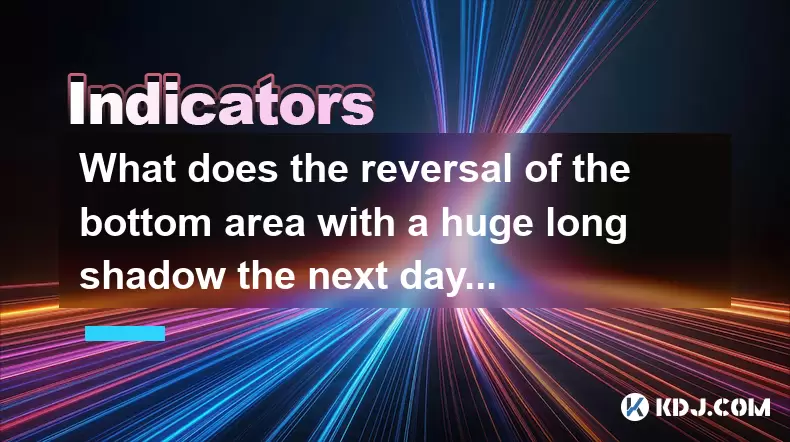
Understanding the Reversal of the Bottom Area with a Huge Long Shadow
In technical analysis within the cryptocurrency market, candlestick patterns play a crucial role in predicting potential price movements. One such pattern is the reversal of the bottom area with a huge long shadow. This typically refers to a scenario where a candlestick forms at the lower end of a downtrend and exhibits a long lower shadow, often accompanied by a small body located near the top of the candle's range.
The presence of a huge long shadow indicates that sellers pushed prices significantly lower during the trading period but were met with strong buying pressure that drove prices back up toward the opening level. This suggests that market sentiment may be shifting from bearish to bullish as buyers start to take control.
What Does the Long Lower Shadow Represent?
A candlestick with a long lower shadow is generally seen as a sign of rejection of lower prices. In the context of a downtrend, this can indicate that the selling pressure is weakening and that buyers are stepping in at key support levels. The longer the shadow, the stronger the rejection signal becomes.
- Price was pushed down significantly
- Buyers entered the market and pushed price back up
- This creates a psychological floor for future support
In crypto markets, which are known for their volatility, these types of candlesticks often appear before a meaningful bounce or trend reversal. However, it's essential to wait for confirmation from subsequent candles or volume indicators before making any trading decisions.
How to Identify a Reversal Candle with a Long Lower Shadow
Identifying this pattern involves several key elements:
- Candle must appear after a clear downtrend
- Body should be relatively small
- Lower shadow should be significantly longer than the body (ideally 2–3 times the size)
- Little or no upper shadow
For example, if Bitcoin has been falling for several days and suddenly forms a candle with a very long lower wick, it might suggest that a bottom is forming. Traders who recognize this pattern early can position themselves ahead of a potential rally.
It’s also important to check other indicators like volume and RSI to confirm the strength of the reversal. A surge in volume on the candle with the long lower shadow adds credibility to the reversal signal.
What Should Traders Do After Seeing This Pattern?
When traders spot a reversal candle with a long lower shadow, they should not immediately assume that the trend has changed. Instead, they should follow a structured approach:
- Wait for confirmation: Look for the next candle(s) to close above the high of the reversal candle
- Check for volume increase: Higher-than-average volume supports the idea of increased buying interest
- Monitor RSI or MACD: These indicators can provide additional clues about momentum shifts
Traders can also set stop-loss orders below the low of the long shadow to manage risk effectively. If the price holds above that level, it reinforces the validity of the reversal. Conversely, if the price breaks below the shadow again, it may invalidate the pattern.
In fast-moving crypto markets, reacting too quickly can lead to losses. Therefore, patience and confirmation are critical when interpreting this candlestick formation.
How Reliable Is This Pattern in Crypto Markets?
While the reversal with a long lower shadow is a well-known pattern in traditional markets, its reliability in crypto depends on several factors:
- Market conditions: It works best in clearly defined downtrends
- Timeframe: Higher timeframes (e.g., 4-hour or daily charts) tend to give more reliable signals
- Asset liquidity: Major cryptocurrencies like Bitcoin and Ethereum are more likely to produce trustworthy signals compared to lesser-known altcoins
Because crypto markets are prone to sudden pump-and-dump activities and whale manipulation, false signals can occur frequently. Therefore, using this pattern alone is not sufficient for decision-making. Combining it with moving averages or Fibonacci retracement levels can help filter out noise and improve accuracy.
Additionally, traders should avoid relying solely on visual analysis without incorporating some form of quantitative verification. Tools like Ichimoku Cloud or Bollinger Bands can help contextualize the reversal signal within broader price action.
Frequently Asked Questions
Q: Can this pattern appear in uptrends as well?
Yes, although less commonly. When a similar pattern appears in an uptrend with a long upper shadow, it may signal a bearish reversal rather than a bullish one.
Q: What does it mean if the long shadow occurs on high volume?
A long shadow with high volume increases the likelihood of a genuine reversal because it shows that many participants are actively involved in rejecting the current trend.
Q: How long should I wait for confirmation after seeing this candle?
Ideally, you should wait for 1–2 subsequent candles to close above the high of the reversal candle before considering the trend change confirmed.
Q: Is this pattern applicable to all cryptocurrencies?
While it can appear across various assets, it tends to be more reliable in high-cap, liquid cryptocurrencies like BTC, ETH, and SOL. Smaller tokens may generate misleading signals due to volatility and low trading volume.
Disclaimer:info@kdj.com
The information provided is not trading advice. kdj.com does not assume any responsibility for any investments made based on the information provided in this article. Cryptocurrencies are highly volatile and it is highly recommended that you invest with caution after thorough research!
If you believe that the content used on this website infringes your copyright, please contact us immediately (info@kdj.com) and we will delete it promptly.
- Bitcoin Holdings Strategy: Riding the $BTC Wave Like a Wall Street Pro
- 2025-06-24 18:25:12
- Crypto Market Check-in: A16z's Mid-Year Indicators and the Road Ahead
- 2025-06-24 18:25:12
- Crypto Funds See $1.2B Weekly Inflows: Confidence Amidst the Chaos
- 2025-06-24 18:30:13
- Roman Coin Treasure: Centuries Hidden, Finally Revealed!
- 2025-06-24 18:30:13
- Celestia Under Fire: Navigating the $100M FUD Storm
- 2025-06-24 16:45:12
- XLM Price, Bitcoin Solaris, and Returns Prediction: Navigating the Crypto Landscape
- 2025-06-24 16:25:13
Related knowledge
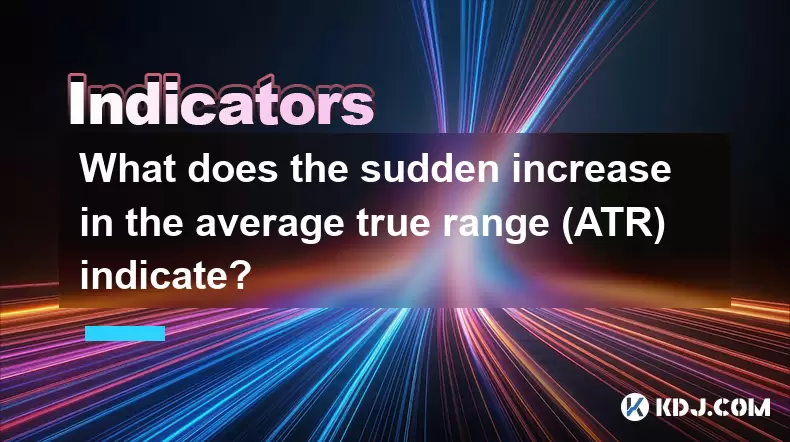
What does the sudden increase in the average true range (ATR) indicate?
Jun 24,2025 at 06:42pm
Understanding the Average True Range (ATR) in Cryptocurrency TradingThe Average True Range (ATR) is a technical indicator used by traders to measure market volatility. In the context of cryptocurrency, where prices can swing dramatically within short periods, ATR becomes an essential tool for assessing potential price movements. The ATR does not indicat...
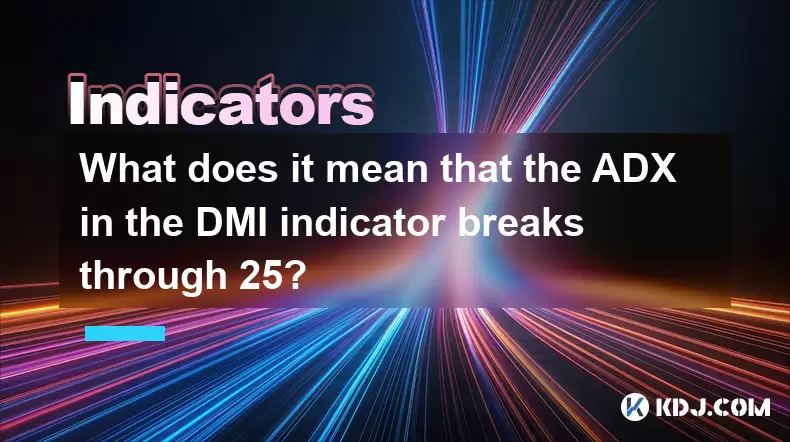
What does it mean that the ADX in the DMI indicator breaks through 25?
Jun 24,2025 at 06:21pm
Understanding the DMI Indicator and Its ComponentsThe Directional Movement Index (DMI) is a technical analysis tool used to identify the strength and direction of a trend in cryptocurrency markets. The indicator consists of two primary lines: the Positive Directional Indicator (+DI) and the Negative Directional Indicator (-DI). These lines help traders ...
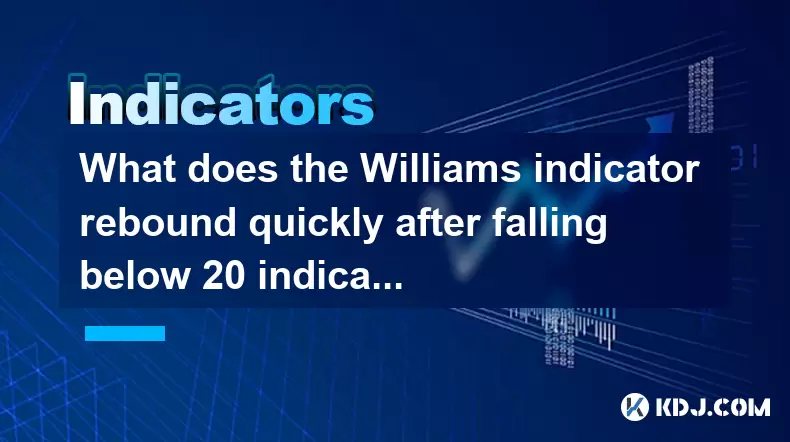
What does the Williams indicator rebound quickly after falling below 20 indicate?
Jun 24,2025 at 04:49pm
Understanding the Williams %R IndicatorThe Williams %R indicator, also known as Williams Percent Range, is a momentum oscillator used in technical analysis to identify overbought and oversold conditions in financial markets, including cryptocurrencies. It was developed by Larry Williams and typically operates on a scale from 0 to -100. In the context of...
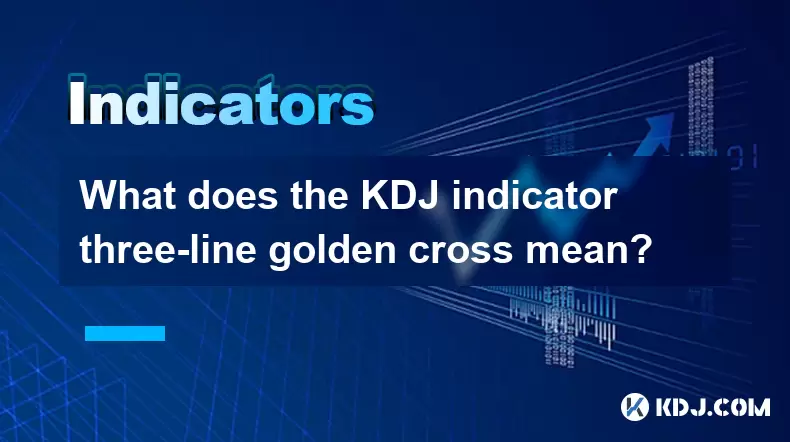
What does the KDJ indicator three-line golden cross mean?
Jun 24,2025 at 05:28pm
Understanding the KDJ Indicator in Cryptocurrency TradingThe KDJ indicator is a technical analysis tool widely used in cryptocurrency trading to identify potential buy and sell signals. It combines elements of two other indicators: the Stochastic Oscillator and the J line, which acts as a signal line. The KDJ consists of three lines — K, D, and J — each...
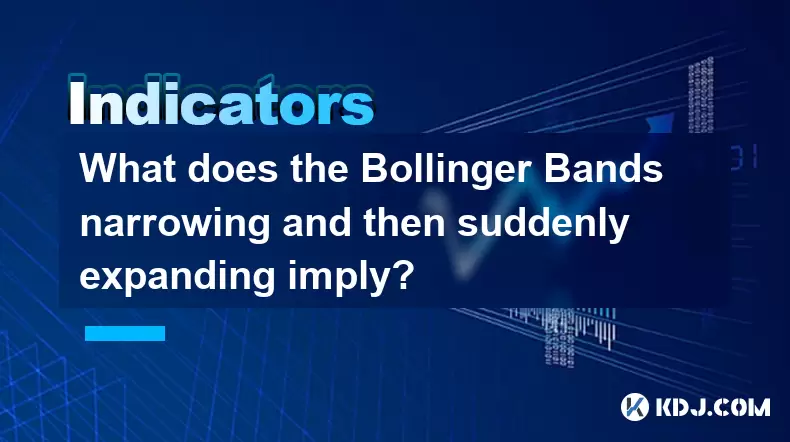
What does the Bollinger Bands narrowing and then suddenly expanding imply?
Jun 24,2025 at 05:56pm
Understanding Bollinger Bands in Cryptocurrency TradingBollinger Bands, a popular technical analysis tool, are widely used in cryptocurrency trading to assess price volatility and potential trend reversals. The indicator consists of three lines: a Simple Moving Average (SMA) in the middle, typically set at 20 periods, with two outer bands that represent...
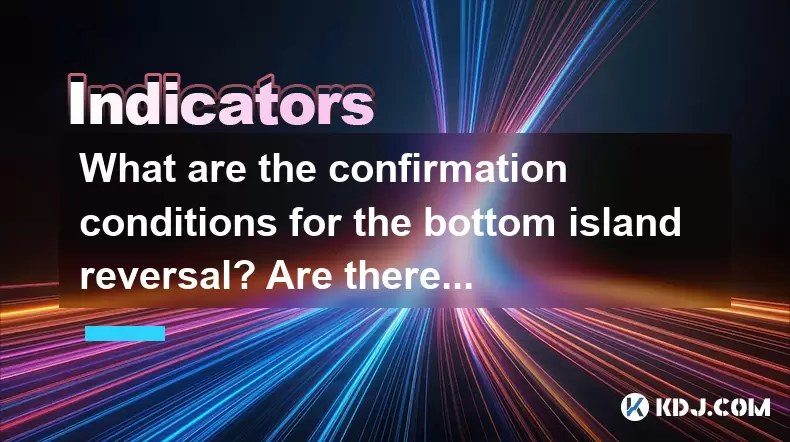
What are the confirmation conditions for the bottom island reversal? Are there many false signals?
Jun 24,2025 at 04:56pm
Understanding the Bottom Island Reversal PatternThe bottom island reversal is a rare but significant candlestick pattern that indicates a potential shift from a downtrend to an uptrend. It typically forms when there's a gap down followed by a gap up, leaving a 'blank' space on the chart — the island — which is isolated from the surrounding price action....

What does the sudden increase in the average true range (ATR) indicate?
Jun 24,2025 at 06:42pm
Understanding the Average True Range (ATR) in Cryptocurrency TradingThe Average True Range (ATR) is a technical indicator used by traders to measure market volatility. In the context of cryptocurrency, where prices can swing dramatically within short periods, ATR becomes an essential tool for assessing potential price movements. The ATR does not indicat...

What does it mean that the ADX in the DMI indicator breaks through 25?
Jun 24,2025 at 06:21pm
Understanding the DMI Indicator and Its ComponentsThe Directional Movement Index (DMI) is a technical analysis tool used to identify the strength and direction of a trend in cryptocurrency markets. The indicator consists of two primary lines: the Positive Directional Indicator (+DI) and the Negative Directional Indicator (-DI). These lines help traders ...

What does the Williams indicator rebound quickly after falling below 20 indicate?
Jun 24,2025 at 04:49pm
Understanding the Williams %R IndicatorThe Williams %R indicator, also known as Williams Percent Range, is a momentum oscillator used in technical analysis to identify overbought and oversold conditions in financial markets, including cryptocurrencies. It was developed by Larry Williams and typically operates on a scale from 0 to -100. In the context of...

What does the KDJ indicator three-line golden cross mean?
Jun 24,2025 at 05:28pm
Understanding the KDJ Indicator in Cryptocurrency TradingThe KDJ indicator is a technical analysis tool widely used in cryptocurrency trading to identify potential buy and sell signals. It combines elements of two other indicators: the Stochastic Oscillator and the J line, which acts as a signal line. The KDJ consists of three lines — K, D, and J — each...

What does the Bollinger Bands narrowing and then suddenly expanding imply?
Jun 24,2025 at 05:56pm
Understanding Bollinger Bands in Cryptocurrency TradingBollinger Bands, a popular technical analysis tool, are widely used in cryptocurrency trading to assess price volatility and potential trend reversals. The indicator consists of three lines: a Simple Moving Average (SMA) in the middle, typically set at 20 periods, with two outer bands that represent...

What are the confirmation conditions for the bottom island reversal? Are there many false signals?
Jun 24,2025 at 04:56pm
Understanding the Bottom Island Reversal PatternThe bottom island reversal is a rare but significant candlestick pattern that indicates a potential shift from a downtrend to an uptrend. It typically forms when there's a gap down followed by a gap up, leaving a 'blank' space on the chart — the island — which is isolated from the surrounding price action....
See all articles
























































































